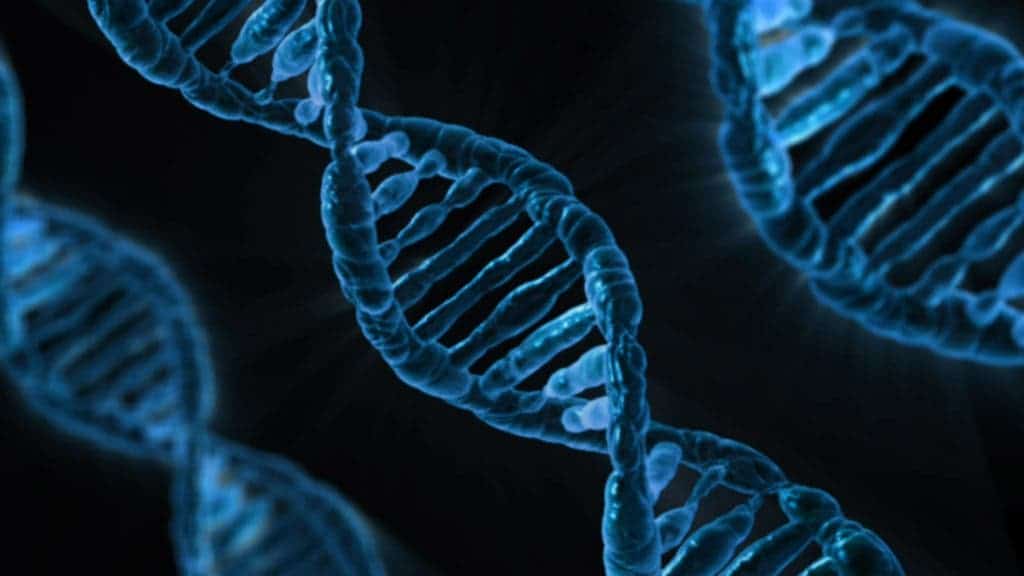
All living things on Earth store information in genetic molecules: either DNA or RNA. But why is it that organisms use only two molecules to store genetic information? What makes DNA and RNA so special? Did the earliest life on Earth actually use a different molecule consisting of different building blocks? These are all important but also very difficult to answer questions — which is where a new study may come in handy.
Researchers at the Tokyo Institute of Technology, the German Aerospace Center (DLR), and Emory University used advanced computational methods to simulate possible nucleic acid-like molecules. They came up with over a million possibilities.
Hereditary molecules
DNA and RNA are known as nucleic acids. These tiny biomolecules not only form the basis for all life on earth, but they’re also key to many treatments for viral diseases such as HIV.
Nucleic acids were first discovered in the 19th-century but it wasn’t until 1953, when Watson and Crick revealed DNA’s double-helical structure, that scientists became aware of their biological and evolutionary functions.
Scientists know about the existence of other nucleic acid-like polymers, but that doesn’t mean that they are capable of storing hereditary information.
“There are two kinds of nucleic acids in biology, and maybe 20 or 30 effective nucleic acid-binding nucleic acid analogues. We wanted to know if there is one more to be found or even a million more. The answer is, there seem to be many more than was expected,” says professor Jim Cleaves of the Earth-Life Science Institute (ELSI) at the Tokyo Institute of Technology
Surprisingly, Cleaves and colleagues found over a million variants of nucleic acid analogs after using sophisticated computational methods that explored the “chemical neighborhood” of DNA and RNA. For instance, although they can have quite different functions, RNA and DNA are separated by the presence of a single atom substitution. There are many more molecules in a similar situation, apparently — with just a minor change, you could end up with a completely new genetic molecule on your hand.
The ultimate aim of this kind of research is to improve our understanding of how the very first life forms appeared on Earth. Most biologists believe that RNA appeared before DNA, however, RNA is also a complex molecule. It is quite possible that a much simple nucleic acid seeded the most primitive life forms. After it served its place and time, this hypothetical genetic molecule was replaced by RNA and then DNA, which became the go-to storage medium for life.
“It is truly exciting to consider the potential for alternate genetic systems based on these analogous nucleosides—that these might possibly have emerged and evolved in different environments, perhaps even on other planets or moons within our solar system. These alternate genetic systems might expand our conception of biology’s ‘central dogma’ into new evolutionary directions, in response and robust to increasingly challenging environments here on Earth,” Dr. Jay Goodwin, a chemist with Emory University and co-author of the new study, said in a statement.
Besides fundamental science, there may also be practical applications for the new investigation, such as new drugs.
Organisms with large genomes, like humans, employ a very complex cellular machinery to copy hereditary information. As such, when copying DNA, these organisms have mechanisms in place that avoid selecting the wrong precursor molecules — otherwise, there might be excessive mutations. Although they’re not technically alive, viruses also have a genome. It is very small, though, and it is far less selective. This fact is exploited by many antiviral drugs, which employ nucleotide analogues that inhibit the virus’ ability to copy its DNA and reproduce.
“Trying to understand the nature of heredity, and how else it might be embodied, is just about the most basic research one can do, but it also has some really important practical applications,” says co-author Chris Butch, formerly of ELSI and now a professor at Nanjing University.
The findings appeared in the Journal of Chemical Information and Modeling.






